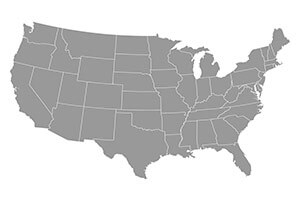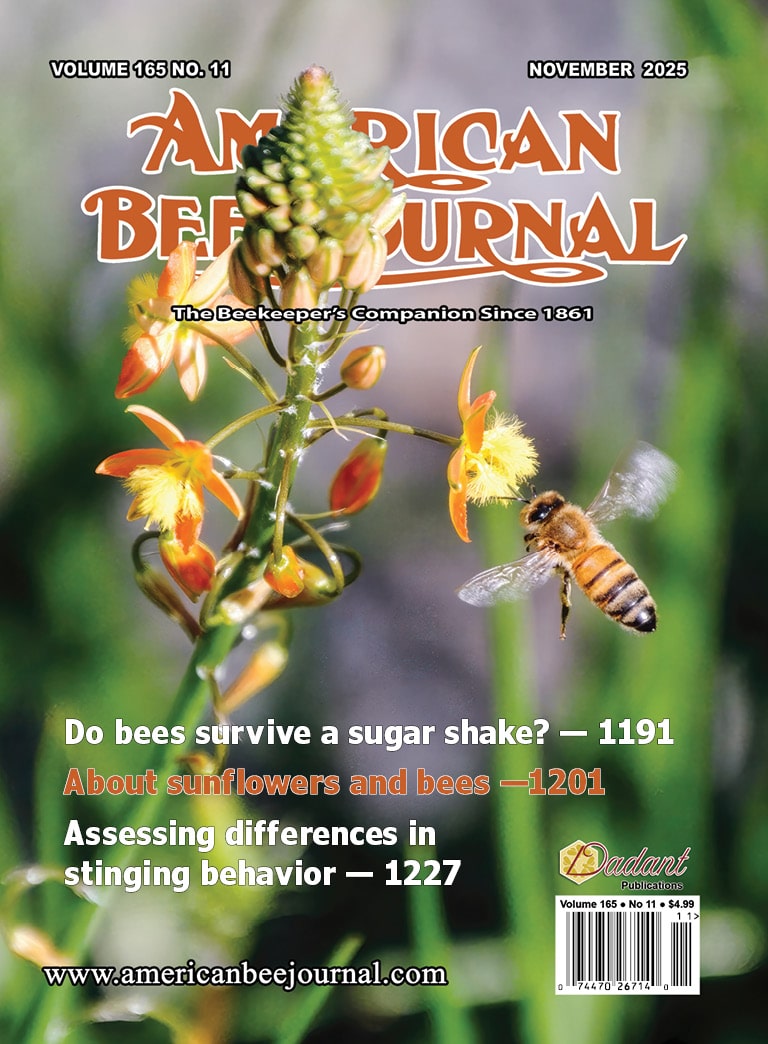
UNITED STATES
As we indicated last month, the U.S. honey crop is going to be smaller this season due to earlier drought conditions in Florida, North Dakota, South Dakota and Montana. On the bright side, some later reports indicate better honey crops in the Upper Midwest than earlier predicted. On the other hand, very hot, dry summer weather shut down wildflower flows over much of the West Coast earlier than expected. The USDA estimated the 2016 U.S. honey crop to be 162 million pounds, so we believe the 2017 crop will probably be 10 million or more pounds below that if present statewide honey crop estimates remain unchanged.s this is written, the main concern on everyone’s mind is the flooding tragedy in southeast Texas caused by the hurricane and tropical storm Harvey that brought record rainfall amounts. Texas is a big beekeeping state and many hobbyists, as well as commercial beekeepers, have apiaries in the southeast Texas area. Although beekeepers had already removed and extracted much of their honey crop before the flooding, in many cases apiaries could not be moved to higher ground before the flood waters came. Our thoughts and prayers go out to all those affected by this unprecedented flooding event.
Most reporters are still optimistic about a continuing strong retail honey market. They also believe that wholesale honey prices and demand, especially for the lighter grades of honey, will be better than last year due to the anticipated shorter U.S. crop.
NORTHEAST
The spring and summer seasons brought spotty honey flows to much of the area. Some locations reported excellent honey crops, while other beekeepers complained of erratic weather. Especially detrimental were long periods of cool, wet weather during some of the major honey flows. On the bright side, the excess moisture in some states promises to bring on good late summer and fall flows from goldenrod, aster, Japanese knotweed, purple loosestrife, Joe-pye weed, jewel weed and other late-season wildflowers. Honey crop averages are ranging from below average to near average, according to our reporters. Many beekeepers had begun their mite treatments, but others planned to wait until after the fall flows have finished. Not a lot of honey sales were reported yet, but as the fall and winter seasons approached, beekeepers expected to have their new crop honey available for sale. This should bring about a surge in honey sales that will last through the holiday season and into the new year.
MIDEAST
While earlier rainy weather was blamed on hurting honey flows in parts of Kentucky and Tennessee, farther north into states like North Carolina and Virginia earlier dry weather was a problem for plant growth. Earlier good flows in North Carolina were reported from tulip poplar, sumac, basswood, clover and sourwood. Clover flows in Kentucky were hurt by extended periods of rainy weather. Beekeepers were hoping that the excess moisture, however, would extend some of the summer and fall flows. Some late flows were mentioned from soybeans, second-growth alfalfa, smartweed, goldenrod, wingstem and aster.
As this report was written, some beekeepers were worried about the possibility of Tropical Storm Harvey moving through the Ohio Valley and potentially dumping large amounts of rain on the area, possibly causing flooding and ruining any late fall flows. Beekeepers had begun their varroa mite treatments. Small hive beetles were also a problem for a number of beekeepers this season. Many beekeepers were finishing their honey extracting for the season and bottling their crop in anticipation of strong fall and winter honey sales. Most of last season’s crop had been sold, so consumers were eager to start purchasing new-crop honey.
SOUTHEAST
Reporters from many of these states (with the exception of Florida) blamed too much rainy weather during their honey flows for lowering honey crops this season. On the other hand, earlier drought in Florida was generally blamed for poor honey crops from orange groves, gallberry, palmetto, tupelo and wildflowers. The important Florida Brazilian pepper flow was due to start in September, but this flow could be impacted by drenching rains that have blanketed much of state in recent weeks. Many of Florida’s commercial colonies were currently in northern states for honey flows.
Some beekeepers reported that they had colonies starving due to the rainy weather and had to feed them. In addition, beekeepers were treating for varroa mites since their mite populations were increasing. Small hive beetles were also causing problems since their populations also increase in late summer and early fall. Most beekeepers had pulled and extracted most of their honey crop, but in some cases rainy weather had kept beekeepers out of their beeyards. Offerings of new crop honey are selling well at both the wholesale and retail levels. There is currently a shortage of locally produced honey in the Southeast, especially the lighter grades.
SOUTHWEST
Catastrophic flooding caused by Hurricane Harvey has affected many beekeepers over large portions of Southeast Texas, as well as portions of Louisiana and Mississippi. Although most beekeepers had already removed much of their honey crop for the season, the loss of hives and other beekeeping equipment will have devastating effects on beekeepers located in these flooded locations. As this was written, we had no firsthand information of the extent of the damage to apiaries, but we are sure many colonies were lost. This part of Texas is home to many hobbyists and some commercial beekeepers.
Even before Harvey arrived, beekeepers over much of this area had complained that rainy weather had washed out many of their traditional spring and early summer honey flows, thus decreasing their total honey crops. The rainy weather was mainly mentioned as a problem in parts of Texas, Louisiana and Arkansas. Rains in Oklahoma, New Mexico and Arizona at times delayed foraging, but they also helped some flows that are normally limited by dry weather. For example, a few of our reporters said that some of the desert wildflowers actually bloomed a second time due to the excessive rain. As this was written, remaining …


